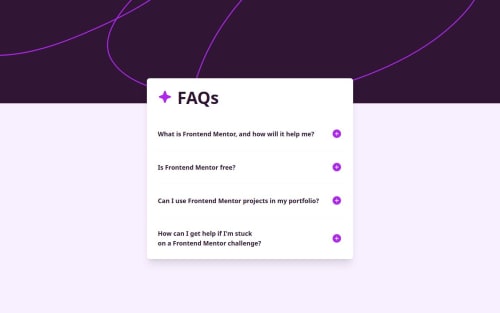Accessible Accordion using Astro, Svelte, and Tailwind v4 Alpha

Solution retrospective
I used Svelte with Astro to handle the JavaScript in this component. I wanted to make sure the accordion was accessible so instead of rebuilding my own accordion I used a Svelte component library called shadcn-svelte. This is a Svelte implementation of the popular shadcn ui component library for React.
I believe this challenge is a bit harder than a Newbie challenge if you were to consider accessibility. Especially if you intended developers to implement this from scratch without relying on an external library.
Nonetheless, I learned a lot from completing this challenge.
Please log in to post a comment
Log in with GitHubCommunity feedback
No feedback yet. Be the first to give feedback on Brian Michael Poblete's solution.
Join our Discord community
Join thousands of Frontend Mentor community members taking the challenges, sharing resources, helping each other, and chatting about all things front-end!
Join our Discord